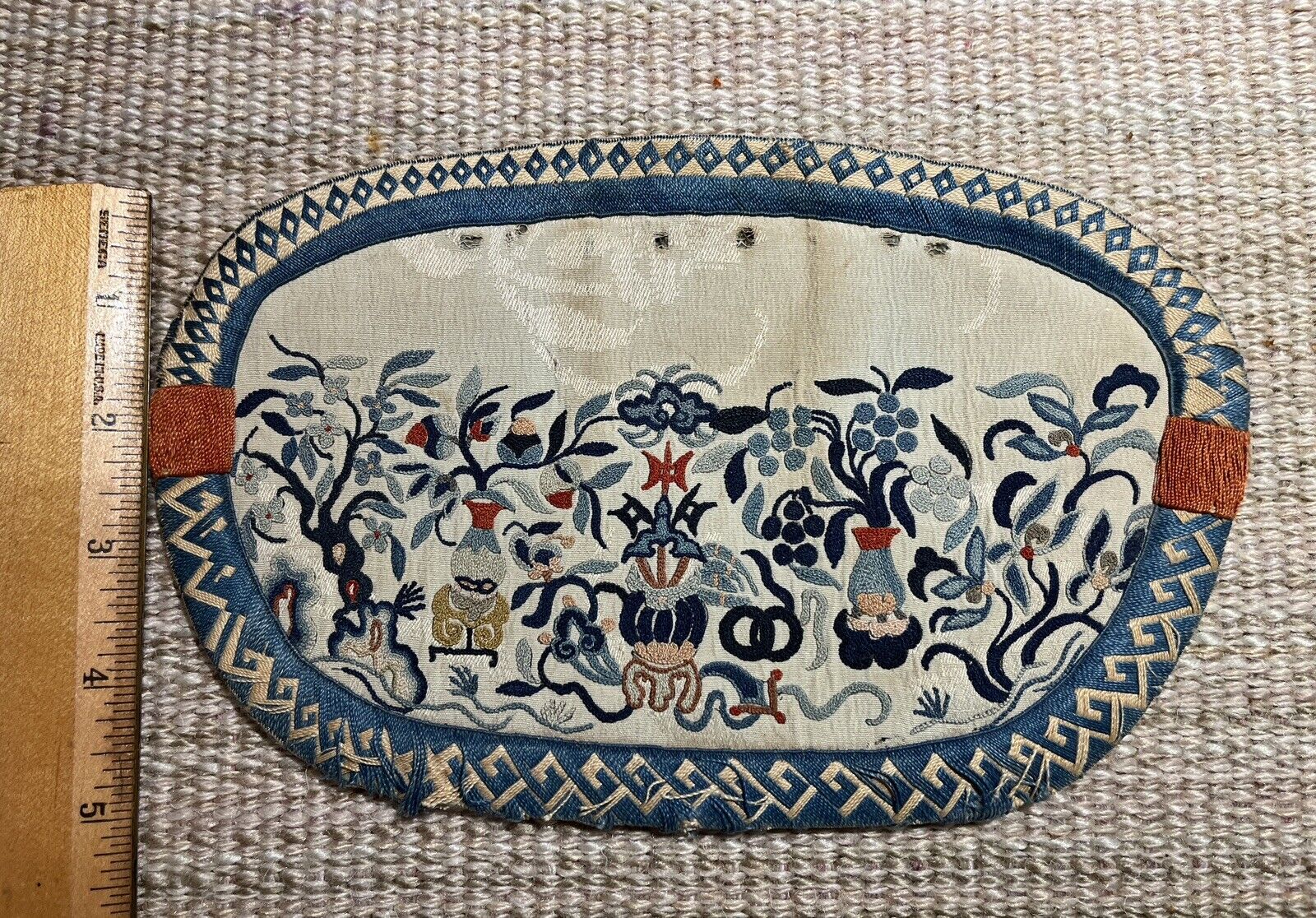-40%
CHINESE WHA CHOENG GALLERY HAND EMBROIDERED SILK THE EIGHT IMMORTIALS XIAN ART
$ 315.74
- Description
- Size Guide
Description
CHINESE WHA CHOENG GALLERYHAND EMBROIDERED SILK THE EIGHT
IMMORTIALS XIAN ART
Up for your consideration is a professionally framed
wood backing master piece.
Framed 45 in Wide X 24 in High
Actual Art work with out border is
20 in Wide X 16 in High
Decorative Hinges for hanging shows signs of wear
This was acquired from my grandmothers home.
They purchased it in Hong Kong.
WHA CHEONG
Artistic Picture Framer Art Gallery
High Quality Chinese Hand Embroidered
Silk work of art.
Eight Immortals
The Eight Immortals are a group of legendary Xian
in Chinese mythology. Each immortal's power
can be transferred to a vessel that can bestow life or
destroy evil. Together, these eight vessels are
called the "Covert Eight Immortals". Most of them
are said to have been born in the Tang or Shang Dynasty.
They are revered by the Taoists and are also a popular
element in the secular Chinese culture.
They are said to live on a group of five
islands in the Bohai Sea, which includes Mount Penglai.
The tradition of depicting humans who have
become immortals is an ancient practice in
Chinese art, and when religious Taoism gained
popularity, it quickly picked up this tradition with its
own immortals.[citation needed] While cults dedicated
to various Taoist immortals date back to the Han
dynasty, the popular and well-known Eight
Immortals first appeared in the Jin dynasty. The art
of the Jin tombs of the 12th and 13th centuries
depicts a group of eight Taoist immortals in wall
murals and sculptures. They officially became known as
the Eight Immortals in the writings and works of art of
the Taoist group known as the Complete
Realization (Quanshen). The most famous art
depiction of the Eight Immortals from this period
is a mural of them in the Eternal Joy Temple (Yongle Gong)
at Ruicheng.
The Eight Immortals are considered to be signs
of prosperity and longevity, so they are popular
themes in ancient and medieval art. They were
frequent adornments on celadon vases. They were
also common in sculptures owned by the nobility.
Their most common appearance, however, was
in paintings.[citation needed] Many silk paintings,
wall murals, and wood block prints remain of the
Eight Immortals. They were often depicted either
together in one group, or alone to give more
homage to that specific immortal.
An interesting feature of early Eight Immortal artwork
is that they are often accompanied by jade hand
maidens, commonly depicted servants of the higher
ranked deities, or other images showing great spiritual
power. This shows that early on, the Eight Immortals
quickly became eminent figures of the Taoist religion
and had great importance.[citation needed] We can
see this importance is only heightened in the Ming
and Qing dynasties. During these dynasties, the
Eight Immortals were very frequently associated with
other prominent spiritual deities in artwork. There
are numerous paintings with them and the Three
Stars (the gods of longevity, prosperity, and good
fortune) together. Also, other deities of importance,
such as the Queen Mother of the West, are commonly
seen in the company of the Eight Immortals.
The artwork of the Eight Immortals is not limited
to paintings or other visual arts. They are quite prominent
in written works too. Authors and playwrights wrote
numerous stories and plays on the Eight Immortals.
One famous story that has been rewritten many times
and turned into several plays (the most famous written
by Mu Zhiyuan in the Yuan Dynasty) is The Yellow-Millet
Dream, which is the story of how Lǚ Dòngbīn met
Zhongli Quan and began his path to immortality.
Any Questions please ask.
ABOUT THE ART FORM:
Chinese embroidery has a long history since the Neolithic age.
Because of the quality of silk fiber most Chinese fine embroideries
are made in silk. Some ancient vestiges of silk production have been
found in various Neolithic sites dating back 5,000–6,000 years in China.
Currently the earliest real sample of silk embroidery discovered in China
is from a tomb in Mashan in Hubei province identified with the Zhanguo
period (5th–3rd centuries BC). After the opening of Silk Route in the Han
dynasty, the silk production and trade flourished. In the 14th century, the
Chinese silk embroidery production reached its high peak.
Several major silk embroidery styles had been developed, like
Song Jin (宋锦 Song embroidery) in Suzhou, Yun Jin (云锦
Cloud embroidery) in Nanjing and Shu Jin (蜀锦 Shu embroidery)
in Sichuan.
Today, most handwork has been replaced by machinery, but some
very sophisticated production is still hand-made. Modern Chinese
silk embroidery still prevails in southern China.




















